
Home > CICI News > What’s New

| Title | Korea CQ - 'The Lee Kun-hee Collection Effect' Special Lecture by So-young Moon, Culture & Lifestyle Editor for Joongang Sunday | ||||
|---|---|---|---|---|---|
| Posted by | webmaster | Hit | 65 | Date | 2024.02.28 |
| Files | |||||
Dear Korea CQ members,
On February 20th, a special lecture on Lee Kun-hee
Collection Effect by So-young Moon, Culture & Lifestyle Editor for Joongang
Sunday, was held at the British Ambassador's residence. 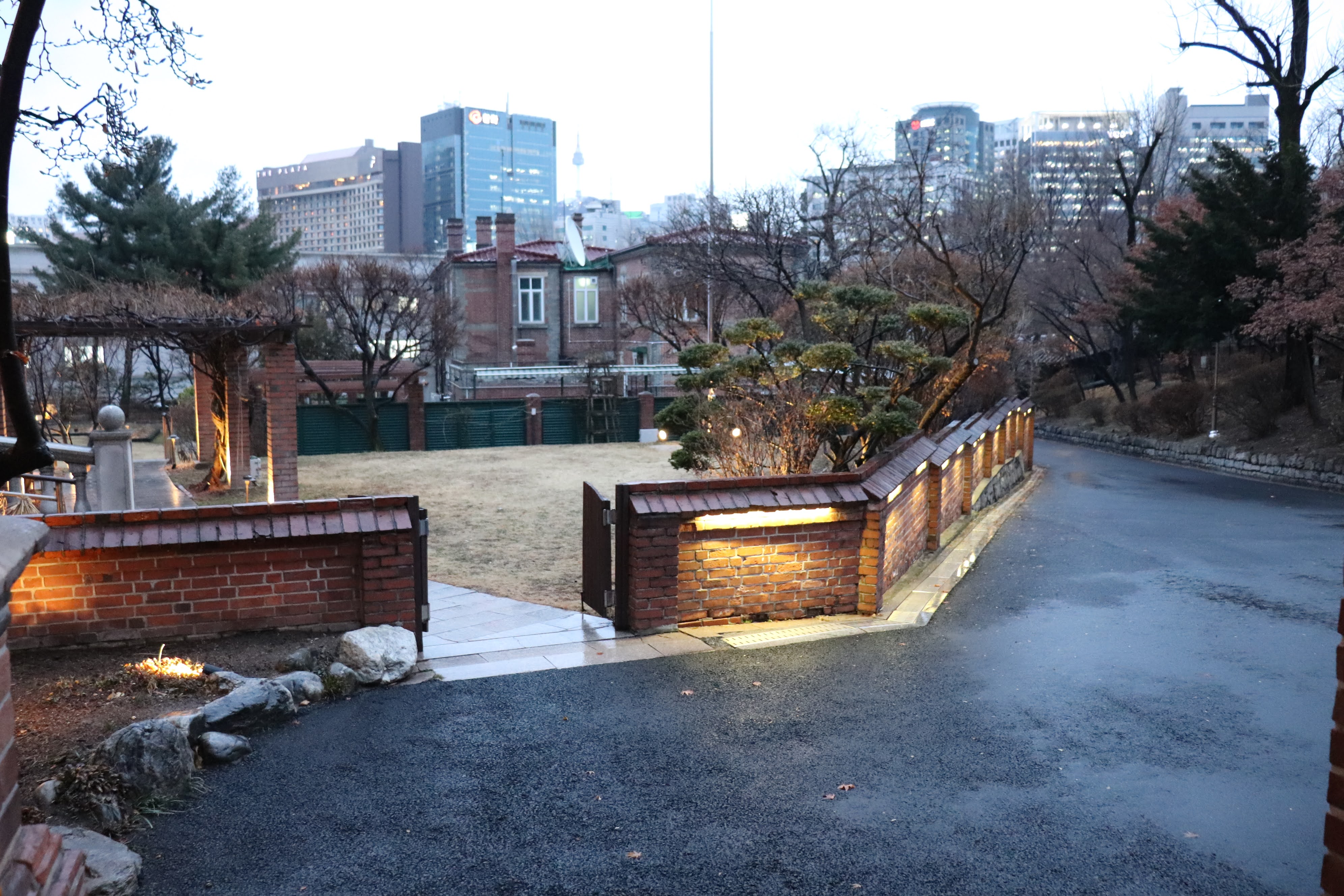
H.E. Colin Crooks, H.E. Dagmar Schmidt Tartagli, H.E. Dawn Bennet, Young-hee Crooks, So-young Moon, Frantz Hotton, Ian Jeong, Joohyun Ha, Joseph Young, Youngha Go, James Park, Stéphane Deblaise, Francis W. Choi, Eugene Bang, Ki Young Sohn, Kevin Junghan Kim, Jungeun Lee, Didier Beltoise and Crystal Park participated in the event. 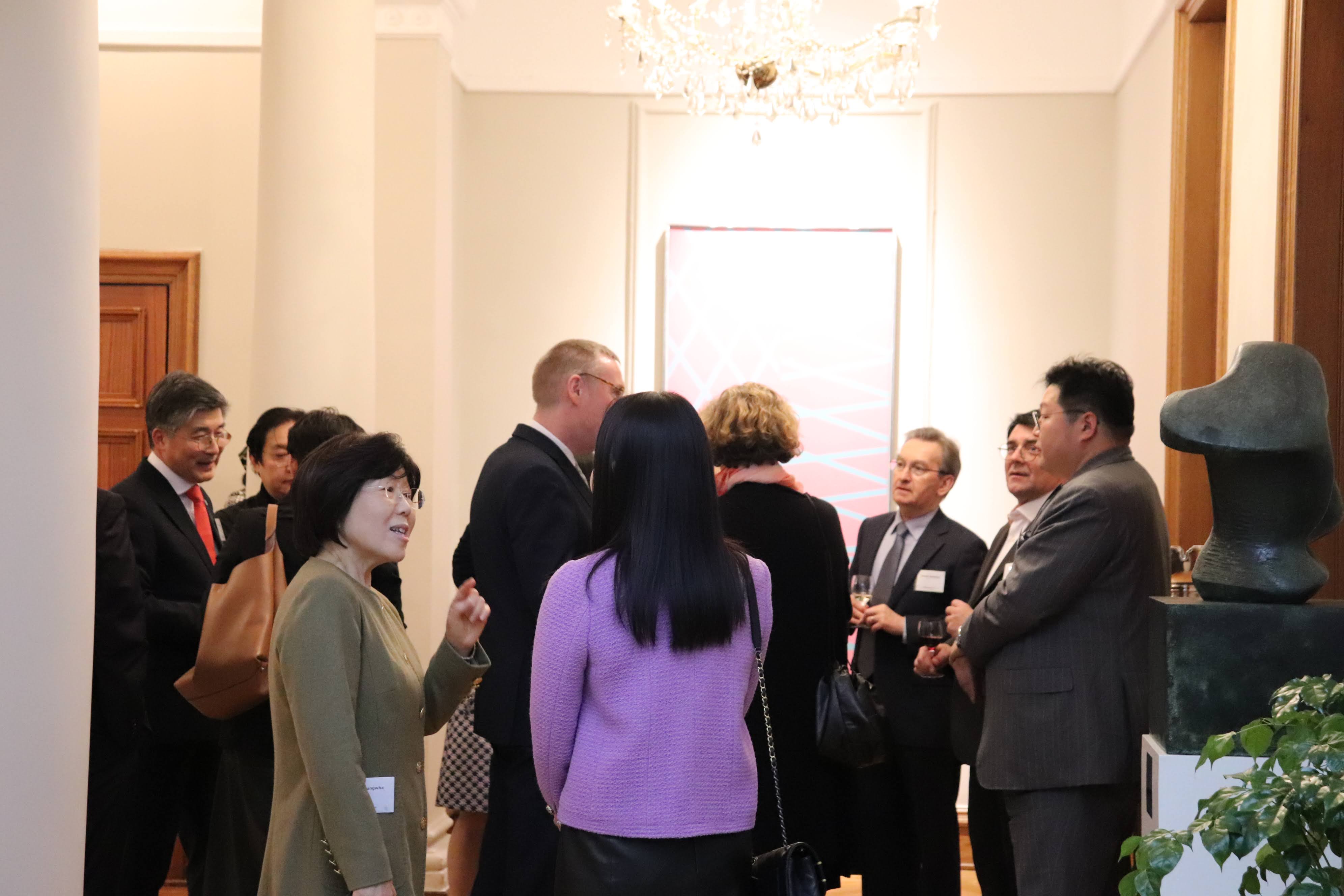
Ambassador Colin Crooks warmly welcomed everyone. 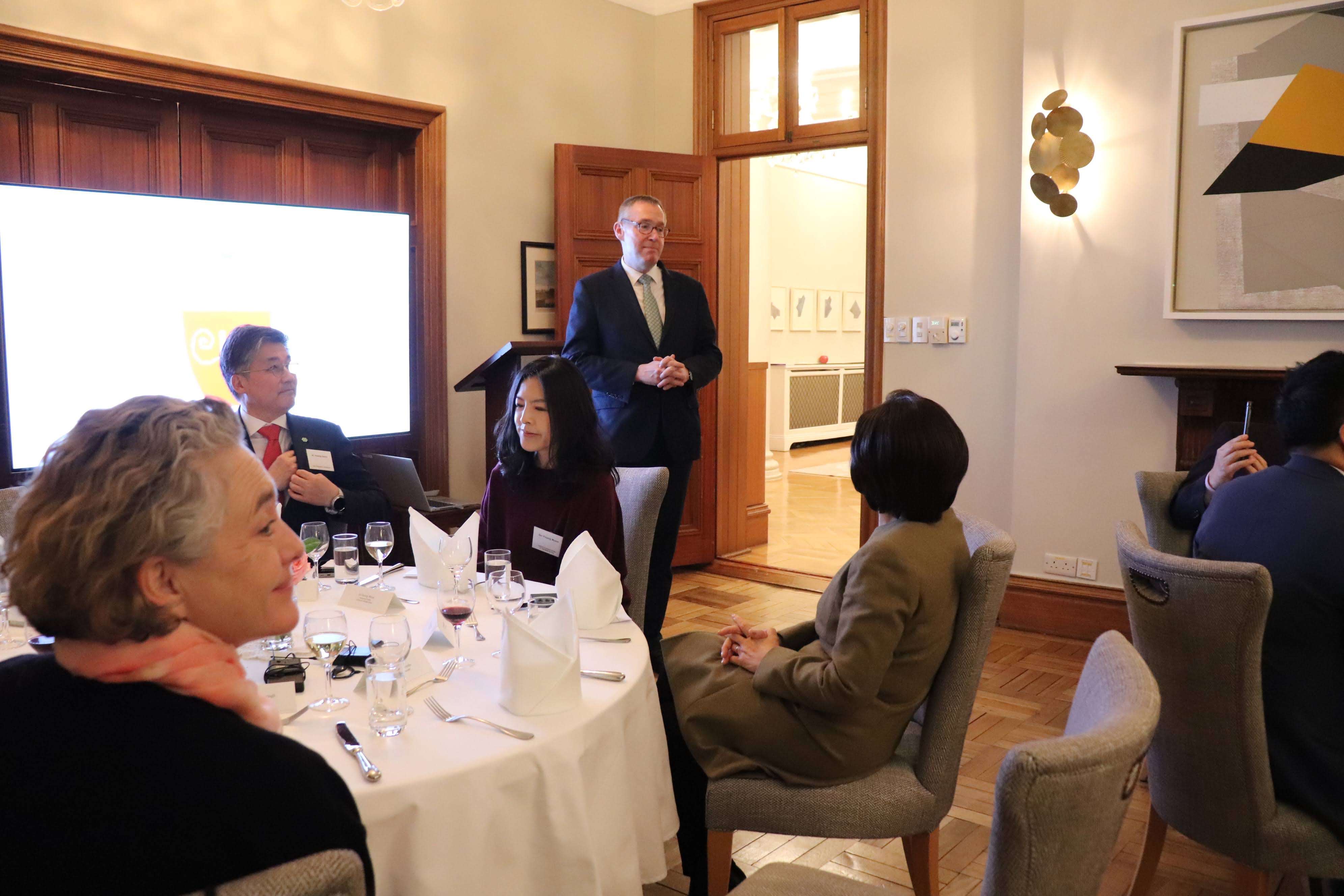
Members enjoyed a delicious dinner specially prepared by the Ambassador and the wine sponsored by Pernod Ricard Korea. 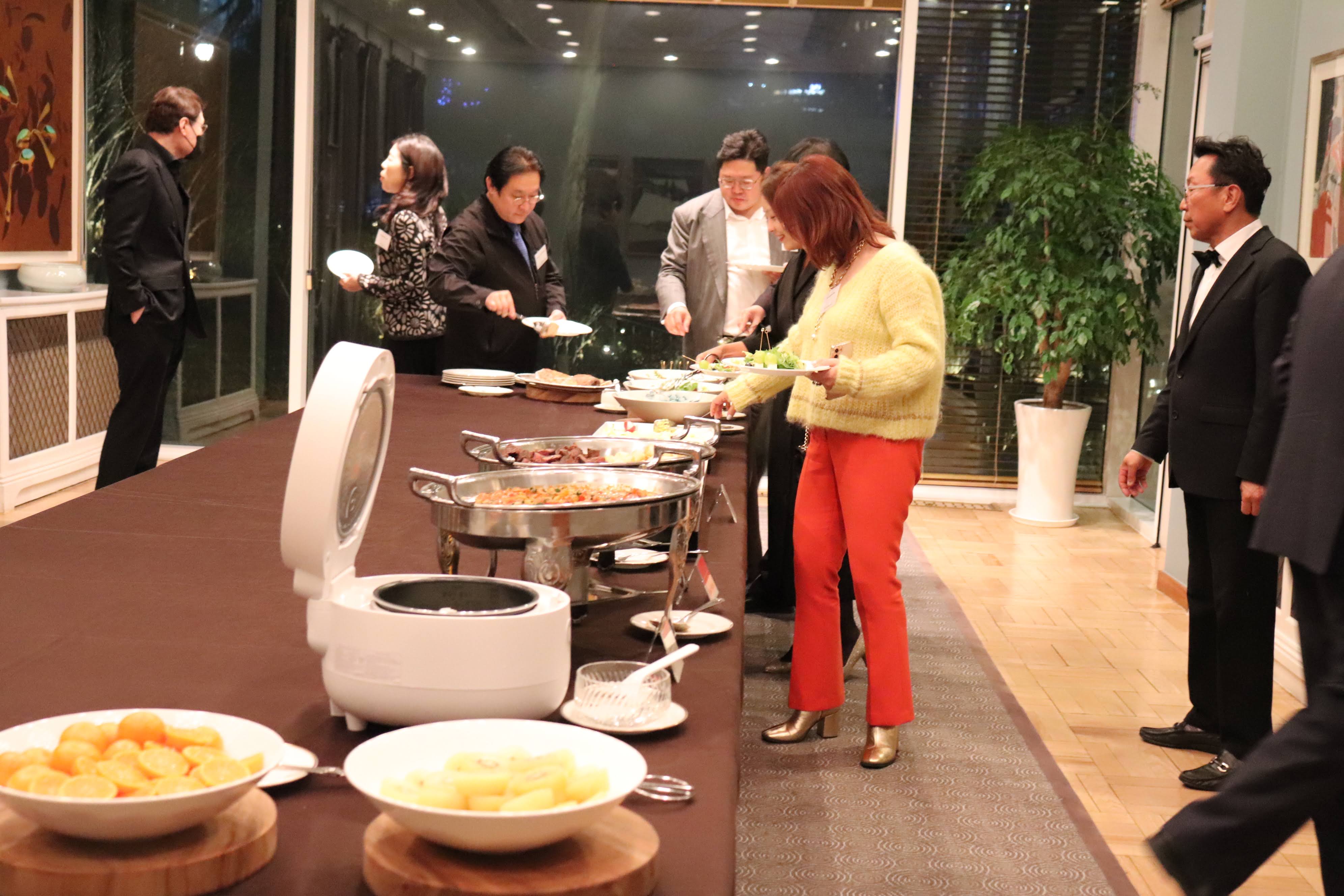
So-young Moon's lecture on Lee Kun-hee Collection
Effect started after the dinner. So-young Moon serves as a non-executive director at the Korea Creative Content Agency and is the author of bestsellers such as 'Economic History in Art' and 'Reading Literature in Paintings.' 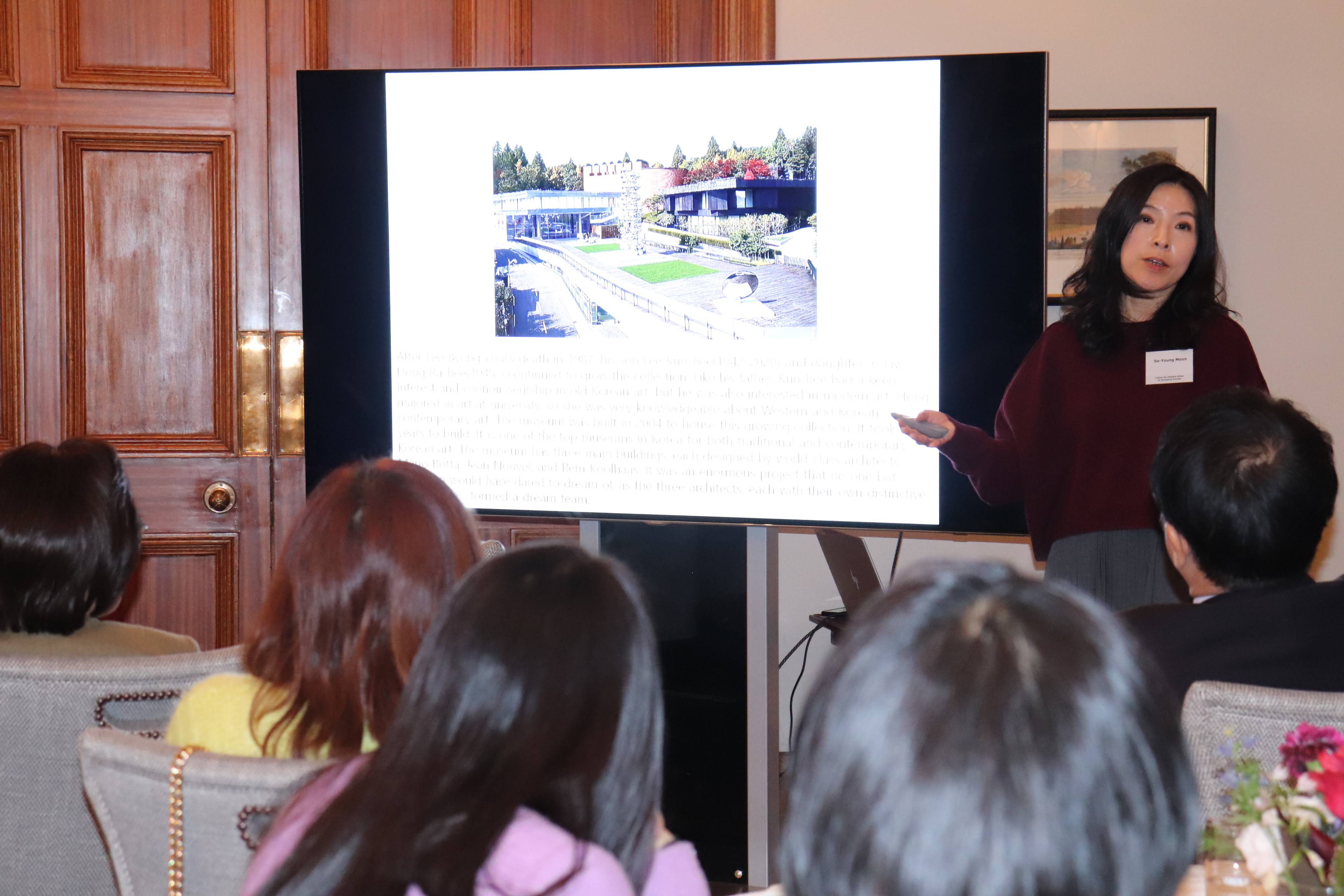
Participants all asked many questions after the informative lecture. 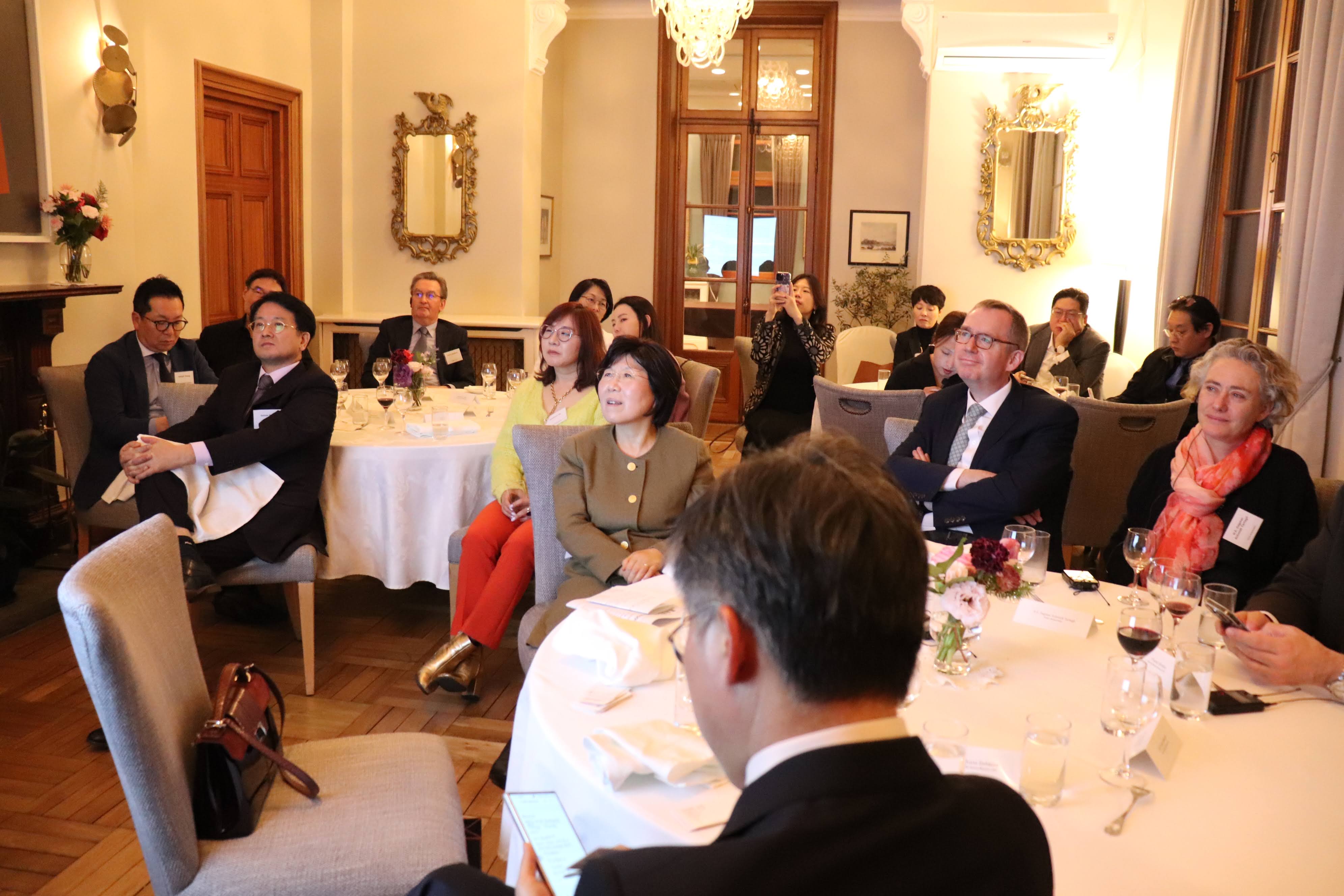
We then took time to admire the artwork on display at
the British Ambassador's residence. 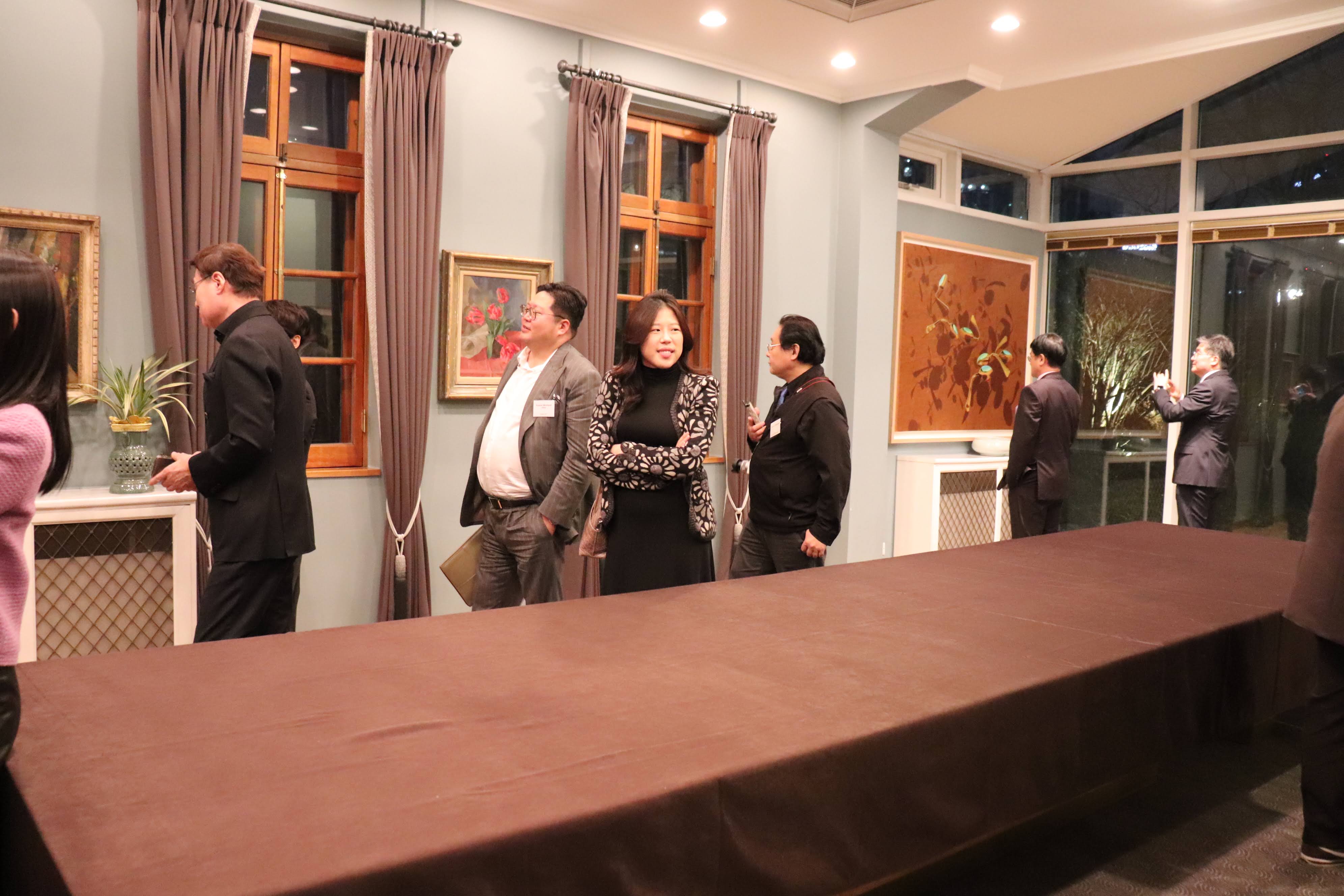
We would like to thank So-young Moon for her lecture, and H.E. Colin Crooks for inviting us to his residence. We'd also like to thank all members who attended, and Crystal Park for her interpretation. 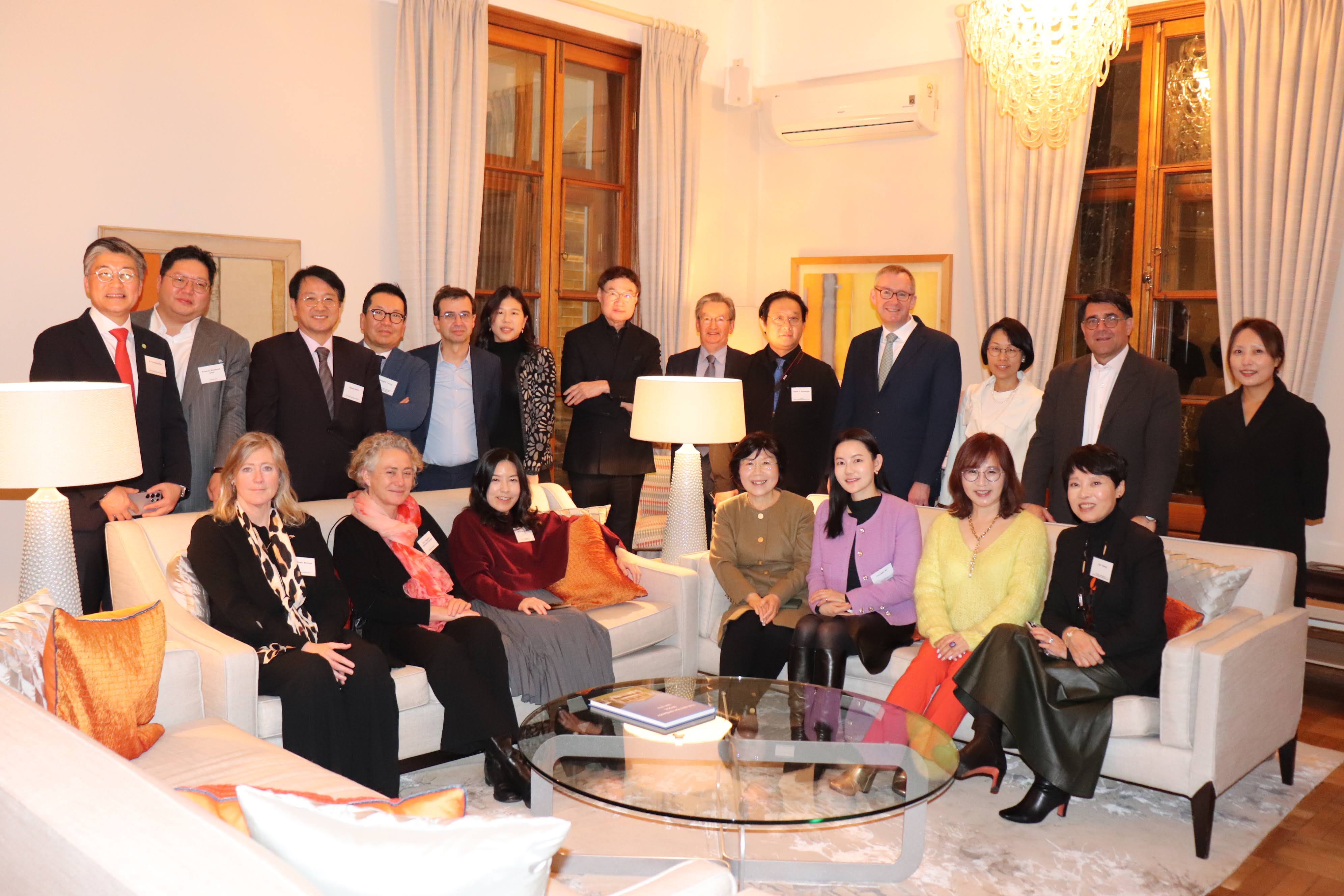
Please click the link below for more pictures https://photos.app.goo.gl/aEMsC6F8c9rh41wy7 Lee Kun-hee Collection Effect by So-young Moon, Culture &
Lifestyle Editor for Joongang Sunday
What is the so-called ‘Lee Kun-hee Collection’? Why was it able to
garner so much attention? It is much more accurate to call it the ‘Lee
Byung-chul, Lee Kun-hee, Hong Ra-hee Collection’ rather than the ‘Lee Kun-hee
Collection’. Chairman Lee Byung-chul, the father of the late Chairman Lee
Kun-hee and founder of Samsung, had a great interest in old Korean art and
collected numerous. In 1982, he opened the Hoam Museum of Art so that people
could enjoy them together.
The reason why the Hoam Museum of Art has great
significance is because it broke the preconceptions about Korean Buddhist art.
Many people think that Korean Buddhist art is plain and simple, but this
is more of a characteristic of the Joseon period’s Buddhist art. In contrast,
Goryeo Buddhist art is very elaborate, delicate, and colorful. However,
during the Joseon Dynasty, Buddhism was neglected due to the culture of
Confucianism, and much of the Buddhist art that had been passed down until then
ended up in Japan. Then, in 1979, a Goryeo culture exhibition was held in
Japan, and several Korean Buddhist art pieces were put up for auction. Though
there was a guideline that Koreans could not participate in the auction due to
the widespread anti-Korean sentiment at the time, Chairman Lee Byung-chul asked
a foreigner who worked at Samsung in the U.S. to participate in the auction,
and thanks to this, several works were able to be imported back to Korea. .
Chairman
Lee Kun-hee, who was influenced by his father Lee Byeong-chul, was interested
in not only old Korean art but also modern art and purchased a lot of works
from the early 20th century, and Director Hong Ra-hee also had a lot of
knowledge about the latest trends in contemporary art and Western art. As a
result, the Samsung family collection encompassing various eras and trends was
created, and the Leeum Museum of Art, built together by several architectural
masters, was opened as there were too many works for the Hoam Museum of Art to accommodate them all.
In April
2021, with the death of Chairman Lee Kun-hee, the donated art pieces received
great public attention as it was an unprecedented event in Korean history. The
total number of donated works is approximately 23,000, mostly old Korean art and
artifacts, with books accounting for a large portion. The National Museum of
Modern and Contemporary Art now owns 1,488 works of the donated art, and pieces
have been donated to other national and public art museums. However, at the
time, the donation caused conflict between the Korean art world and the
political world. While the family and the art community wanted to distribute
the artworks to various museums for display, the government insisted that a new
art museum be built to commemorate the donation. However, as I (Moon So-young) also
wrote about this at the time, although it has great historical value, Korean
art is not as famous as K-pop, and since about 5,000 of the donated items are
books, I have doubts about whether this collection will have much of a tourist
effect.
Among the
works of art donated to the National Museum of Korea, one of the most
significant works is the Inwangjesaekdo (Clearing after Rain on Mount Inwang),
which depicts the scenery of Mount Inwang after a rain. The reason why <
Inwangjesaekdo > has great significance is that at the time, when people
drew Korean ink-and-wash landscape paintings, many idealized conceptual
landscapes rather than actual landscapes. However, the painting is unique in
that it depicts Inwangsan Mountain, which is a mountain that can just be seen
in the neighborhood, where the actual terrain can be seen in detail. Inwangsan
Mountain is also a place where the ill-fated Grand Prince Anpyeong, enjoyed
spending time.
Next is
<Thousand-Armed Avalokitesvara (Figure of Bodhisattva Avalokitesvara with
1,000 Hands)>. These Korean Buddhist Art Paintings were created during the Goryeo
Dynasty. Over a thousand years have passed and they were usually rolled up and
stored in temples, so the paintings are not in very good condition. If you look
at < Thousand-Armed Avalokitesvara > you can see a Bodhisattva with many
hands showing mercy. It is said that many people made wishes to this
Bodhisattva. <Seokbosangjeol
(Episodes from the Life of Shakyamuni Buddha)> was published to test the
effectiveness of Hangul, a newly created writing system during the Joseon
Dynasty. The <Horn-Shaped Cup> is made of clay from the Three Kingdoms
period in the 5th and 6th centuries, and the <Ritual Bells Presumably from
Deoksan>, made with great casting technology, is assumed to be a tool used
in rituals by powerful priests during the Iron Age. Now, let’s look
at the modern art works donated to the National Museum of Modern and
Contemporary Art. As part of the Lee Kun-hee Collection, the National Museum of
Modern and Contemporary Art received several donated works by great Korean art
artists, including Kim Whan-ki, Park Soo-keun, Lee Jung-seob, and Yoo Young-guk.
This also includes works by painter Paik Nam-soon. Paik Nam-soon, a female
painter who focused on Western painting in the early 20th century, is
considered one of Korea's major female artists along with Na Hye-sok, who was
renowned as a contemporary feminist writer. ‘Paradise’, a work from her prime
era, is in the form of a folding screen and captures the Eastern paradise that
reminds us of the Western Arcadian tradition. Her husband also graduated from
Yale University's College of Fine Arts, where Lee Jung-seob studied, and the
two were a famous artist couple. Next is
<Bull> by Lee Jung-seob, Korea's most loved artist. Lee Jung-seob
believed that bulls were the most Korean subject matter that could most clearly
reveal Korea's identity under Japanese colonial rule, and he painted many bulls
using Western painting techniques. Lee Jung-seob's personal life is marked by
economic poverty and love for his family, touching the hearts of people even
today. This is Park Soo-keun’s <A Woman Pounding Grain>. Park Soo-keun was recognized only
after his death because he was self-taught in art. At the time, in Korea, which
was going through a dark period after the Korean War, it was very easy to find
women giving birth, working with a mortar, or working as a street vendor. Park Soo-keun, who had previously expressed his desire to portray good people around
him, used the granite technique to depict their difficult lives. Next, we
introduce Kim Whan-ki's <Women and Jars>, painted using a semi-abstract
technique. Kim
Hwan-gi showed great affection for moon jars during his lifetime, and he collected
them and painted many in his paintings. He devoted himself to painting, and thus the all-over painting, known as
his signature painting of the 1970s, was born. Yoo
Young-guk’s work is also worth noting. He participated in the abstract painting
movement with Kim Whan-ki and painted many mountains. Due to the
excessive concentration in Seoul, national and public art museums located in
rural areas of Korea are in a poor situation in terms of collection quality,
curatorial staff, lighting, and facilities. However, through this donation of
Lee Kun-hee's collection, a traveling exhibition was held, achieving an
unprecedented record number of visitors in museums all around Korea, achieving
regional promotional effects. This donation had a tremendous impact on Korean
art culture. Q&A Q1. Exactly
how many works do Lee Byung-chul, Lee Kun-hee, and Hong Ra-hee have? A1. We
don't know exactly. The number of donated works is approximately 21,600, but
some predict that the remaining art collection will be even larger. However,
only about seven works by famous Western artists were donated, and even those
cannot be considered very famous works. Q2. How
long will the exhibition last? A2. It is
probably almost done. I understand that the local tour has ended, but you can
always enjoy it as part of Lee Kun-hee's collection at the Leeum Museum of Art. Q3. Are
there any companies in the Korean business world that have collections as great
as Lee Kun-hee’s? A3. Amore
Pacific Museum of Art is well known for exhibiting great collections. In the
case of Hyundai Motors, they provide a lot of support for collections in the
form of sponsorships. In addition, Paradise Hotel in Incheon is also known for
their collection. Q4. How would
you compare the Lee Kun-hee collection to the Louis Vuitton Foundation in
Paris? A4. It
seems similar to the Leeum Museum of Art in that it is a private company
foundation. Q5. K-Art
is receiving a lot of attention. What do you think about Korean art? A5. Maybe
it's because I'm Korean, but I don't think the level of art itself is much
different from the level in the West. However, if we look at reality, hegemony
in the art world lies in the West. Museums, curators, journalists, etc. in the
West are forming an institution. Additionally, the art world is also subject to
many political influences and trends, such as the Black Lives Matter movement,
African art, or Asian art, and it can be seen that the Western world is leading
these trends. Q6. You are
very good at discovering new artists. How do you recognize them? A6. The
popularity of artists differ between the market and biennales, and museums. I
tend to see artists with potential at museums and biennales, but I don't know
much about artists active in the market. Many people ask me about collecting
tips. To sum it up, you should buy art that ‘you really like.’ If there are
works by ten artists that you chose, there’s a chance that one of them will
become even more valuable and highly sought after in the future. You must have
the confidence in all ten works that you chose so that you won’t regret the
purchase of the nine other works that did not rise to fame. A more realistic
advice would be to aim for works worth tens of millions of won, as there is a
lot of uncertainty in works by young artists worth only several million won. Q7.
Following ‘Art Basel’ held in Hong Kong, ‘Frieze Seoul’ continues to be held in
Seoul. Why is Korea emerging as a collectors’ market? A7. Hong
Kong, which has the advantage of having many Chinese collectors, is currently
politically unstable, and Korea is emerging as a reflection of this. Moreover,
there are actually not many artists in Hong Kong. On the other hand, in Korea,
there are many artists and the institutions such as art schools are strong, so
it can be said that the related public (nonprofit) sector has developed a lot.
However, profit-making areas, which are opposite to the public sector, must
also coexist, and unlike Hong Kong, which lacks a public sector, Korea can be
seen as lacking in profit-making areas. However, as it has been slowly becoming
known for a long time that Korea has a large artist base, major galleries are
turning their attention to our country.
Additionally, Korea is a country where many
people have a negative view of the act of collecting itself, perhaps due to Confucian
puritanism. However, recently, a shift in perspective has occurred as
collectors reveal their hobbies rather than hiding them. Additionally, art
collecting is known to be the highest level of luxury, and it is becoming
something that more and more people want to try. |
|||||














